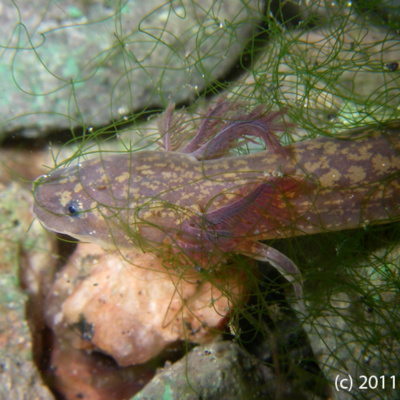The vast expanse of space often feels like a puzzle, with celestial objects serving as pieces that hold clues to the universe’s origins. Among these, Chiron, a rare hybrid between an asteroid and a comet, has captivated scientists. Orbiting between Jupiter and Neptune, Chiron has defied conventional classification and offered a glimpse into the complexities of the solar system’s early history.
Using the state-of-the-art James Webb Space Telescope (JWST), researchers have made groundbreaking observations that reveal Chiron’s unusual chemistry and dynamic behavior. These findings promise to reshape our understanding of centaurs—a class of objects with dual characteristics—and the processes that shaped our solar system billions of years ago.
Centaurs: Time Capsules of the Early Solar System
Centaurs are a rare class of celestial objects that exhibit the dual characteristics of both asteroids and comets. These objects inhabit the region between the gas giants Jupiter and Neptune, making them dynamic and unstable. Centaurs are thought to be remnants from the early solar system, preserved in a frozen state far from the Sun. They act as “time capsules,” holding within them chemical and physical clues about how the solar system formed billions of years ago.
Chiron, discovered in 1977, is one of the most famous centaurs. What sets Chiron apart is its comet-like behavior—it has a faint coma, a halo of gas and dust typically associated with comets, alongside the rocky and icy features of an asteroid. This hybrid nature makes Chiron a unique laboratory for studying processes that blur the lines between these two types of celestial bodies.
Dr. Noemí Pinilla-Alonso, one of the study’s lead researchers, emphasizes the importance of centaurs in understanding the solar system’s history. “All small bodies in the solar system talk to us about how it was back in time,” she explained. Chiron’s activity and chemical makeup are invaluable for decoding the history of planetary formation and evolution.


Chiron’s Unique Chemistry and Behavior
Recent observations using the James Webb Space Telescope have revealed that Chiron possesses an unprecedented chemical diversity. Scientists detected carbon dioxide ice and carbon monoxide ice on its surface, alongside a thin coma containing methane and other gases. This marks the first time such a variety of ices and gases have been observed on a centaur.
What makes Chiron even more intriguing is its persistent activity. Unlike most comets that only display a coma when near the Sun, Chiron retains its gaseous halo even at its farthest point in orbit. This behavior challenges traditional models of comet activity and raises questions about how sunlight interacts with Chiron’s surface and subsurface.
“These results are like nothing we’ve seen before,” noted Dr. Charles Schambeau, co-author of the study.
Chiron’s chemical diversity is a key focus for scientists because it bridges the gap between primordial ices that formed billions of years ago and newer compounds that result from surface processes. This coexistence provides a detailed snapshot of how solar radiation shapes the composition of icy bodies in space.


A Cosmic “Oddball” Among Centaurs
Chiron’s behavior makes it an outlier even among centaurs. While many centaurs are dormant when far from the Sun, Chiron remains active. Its coma, though thinner than those of typical comets, offers scientists an opportunity to study its surface and atmospheric properties simultaneously.
“What is unique about Chiron is that we can observe both the surface and the coma,” said Dr. Pinilla-Alonso. This dual observation is rare and provides valuable insights into the processes that govern both asteroids and comets.
“Every active centaur we observe shows some peculiarity,” she added. Understanding these anomalies could reveal patterns that link centaurs to other celestial objects, helping scientists piece together the larger puzzle of the solar system’s evolution.
Chiron’s unusual activity also points to the complex interplay between its surface materials and the Sun’s heat. As solar radiation penetrates Chiron’s icy layers, it triggers the release of gases, creating its characteristic coma and altering its chemical composition over time.
Key Characteristics of Chiron
| Characteristic | Details |
|---|---|
| Type | Centaur (asteroid-comet hybrid) |
| Orbit | Between Jupiter and Neptune |
| Chemical Composition | Carbon dioxide ice, carbon monoxide ice, methane gas |
| Behavior | Persistent coma and surface activity |
| Unique Feature | Combines ancient and processed ices |
What Chiron Teaches Us About the Solar System
Chiron likely originated in the distant trans-Neptunian region, where icy bodies formed in the early solar system. Over time, gravitational interactions with giant planets such as Jupiter pulled Chiron into its current orbit. This journey exposed Chiron to varying levels of solar radiation, which continuously shape its surface and subsurface properties.
“JWST has made these detections accessible. These results enhance our understanding of Chiron’s interior composition and its unique behaviors,” concluded Dr. Schambeau.
By studying Chiron, scientists can gain insights into the processes that shaped not only centaurs but also other icy objects in the solar system. These findings have implications for understanding the building blocks of planets, moons, and even Earth itself.
Got a reaction? Share your thoughts in the comments
Enjoyed this article? Subscribe to our free newsletter for engaging stories, exclusive content, and the latest news.







Leave a Comment